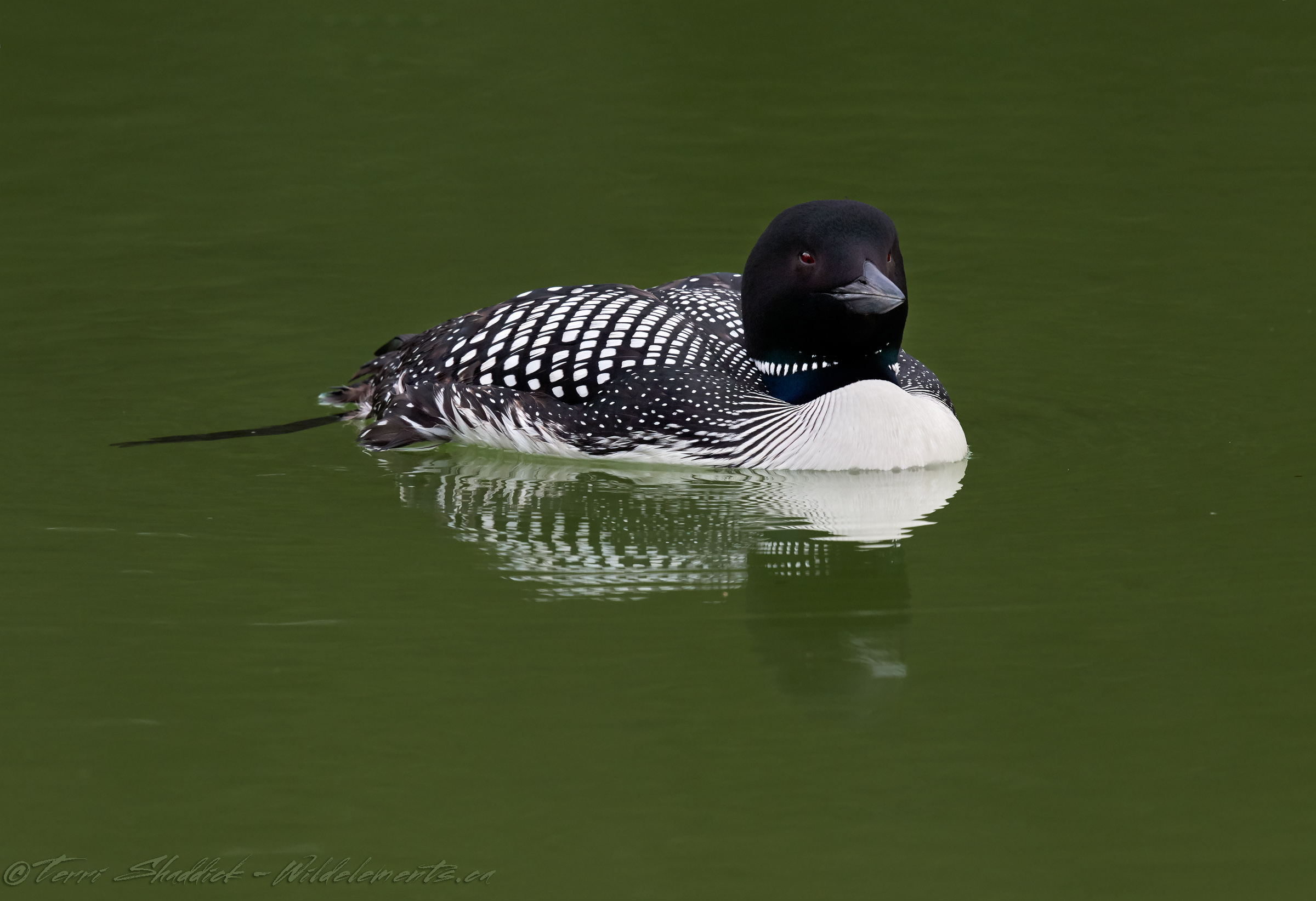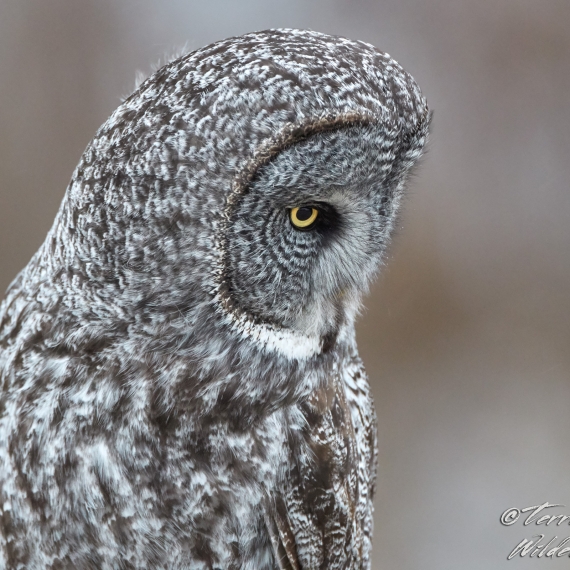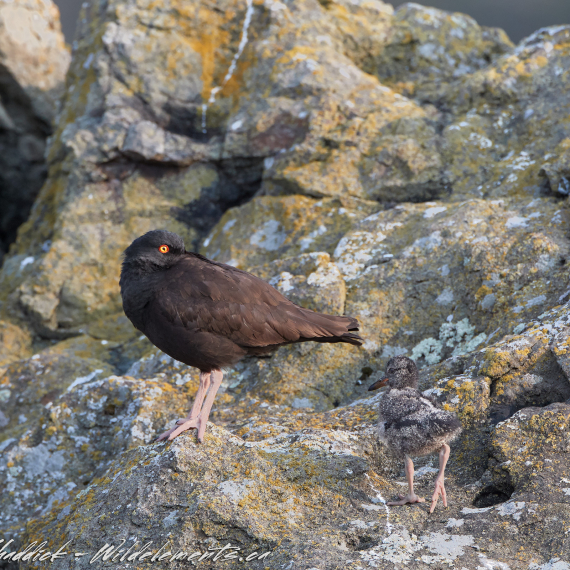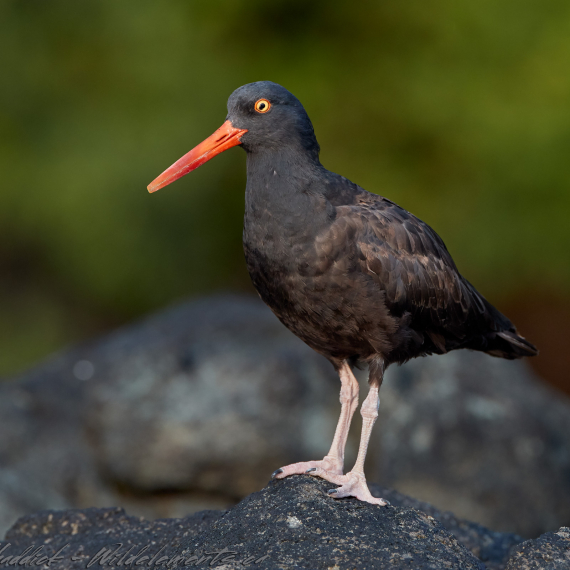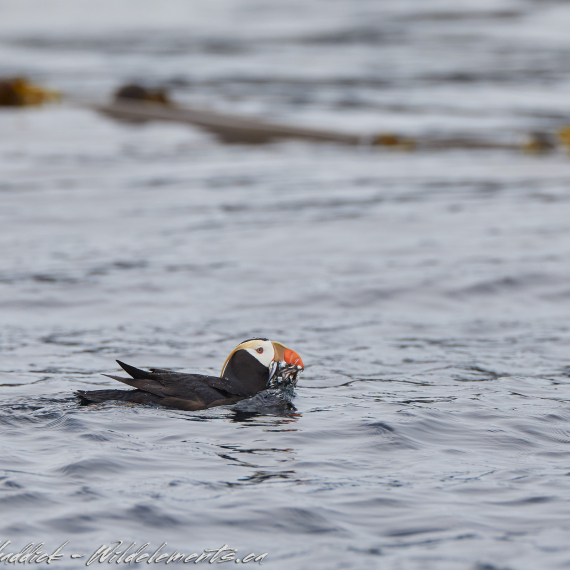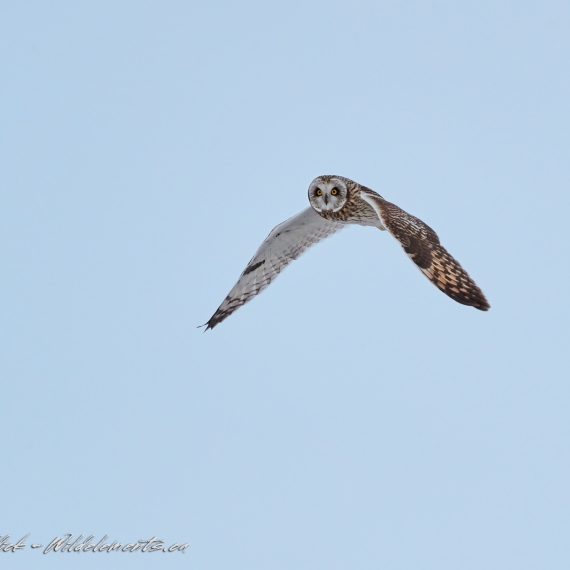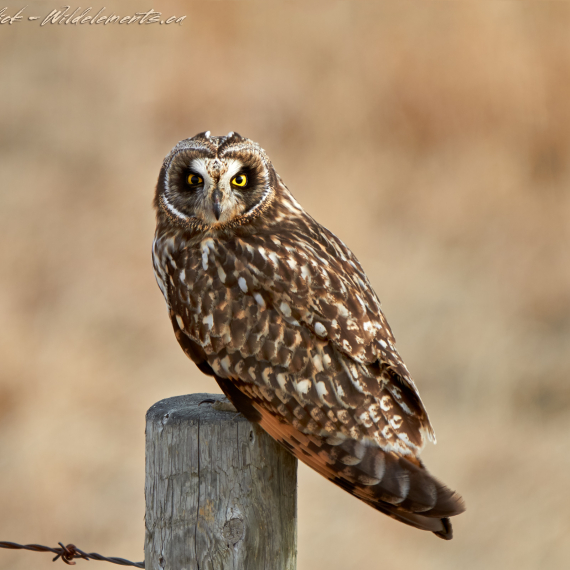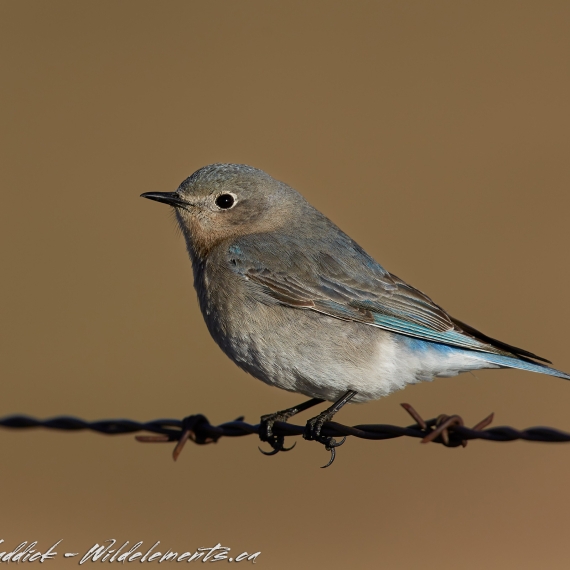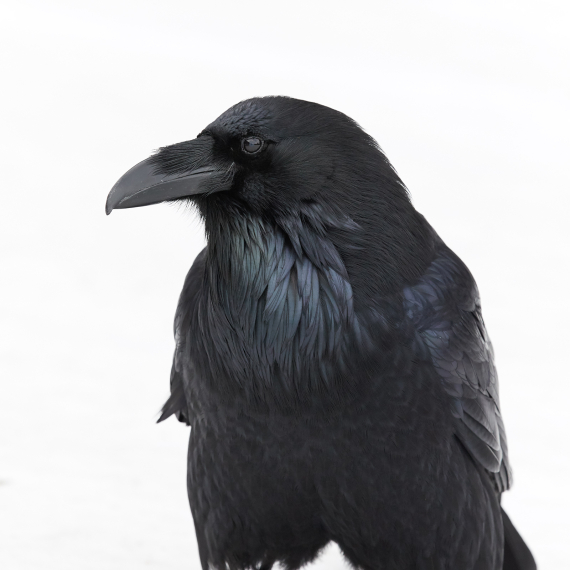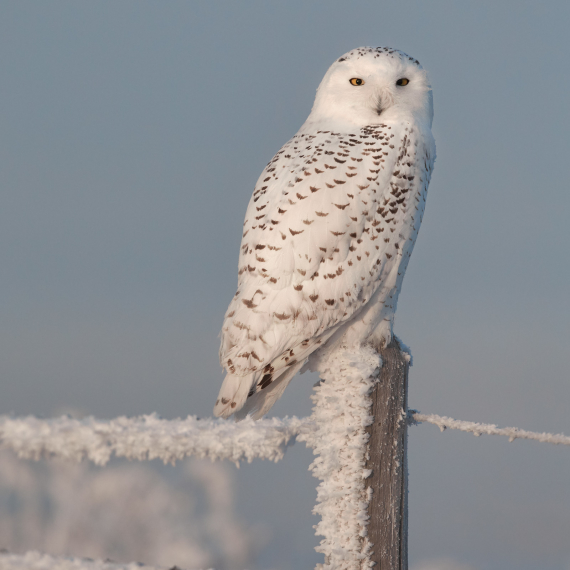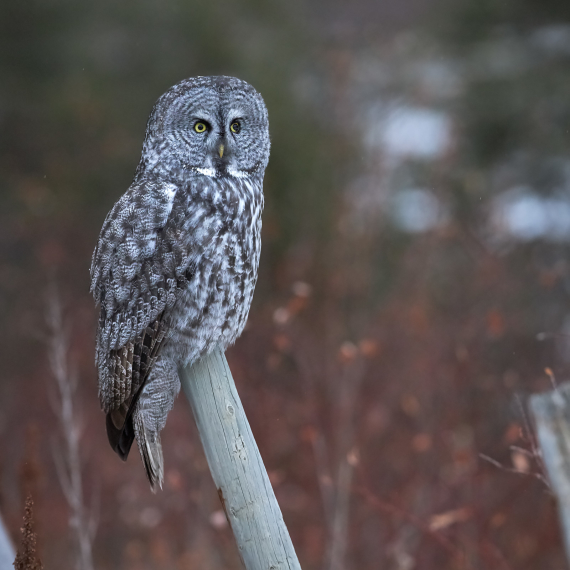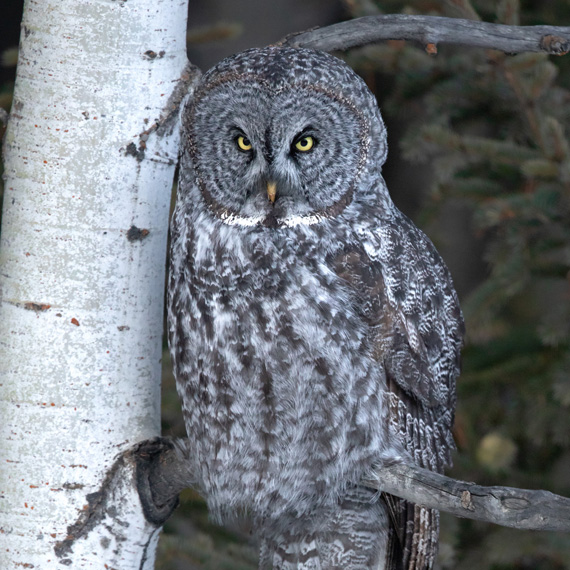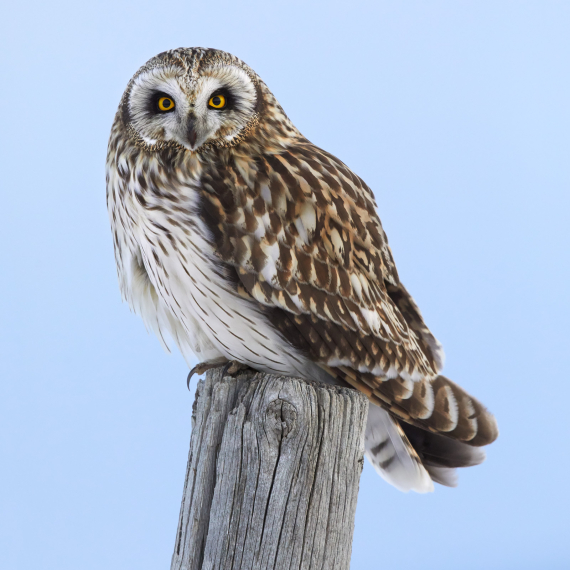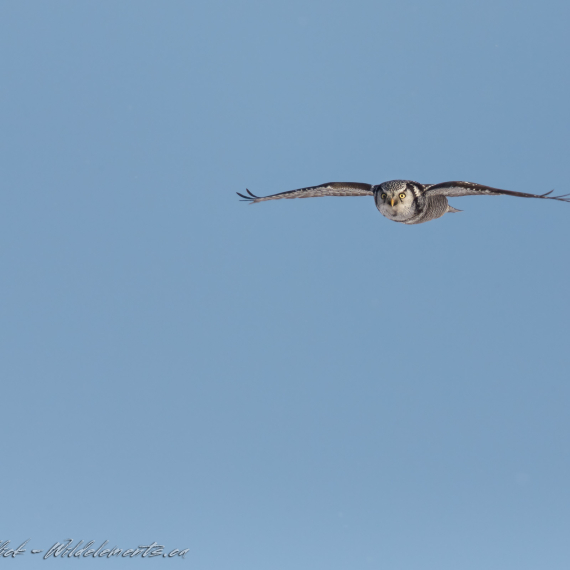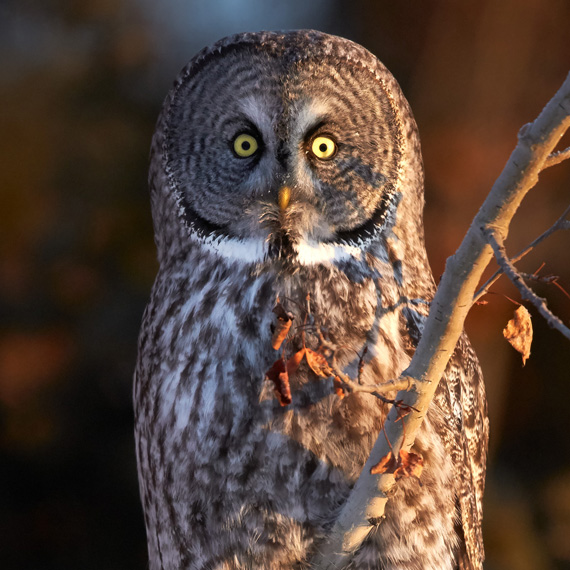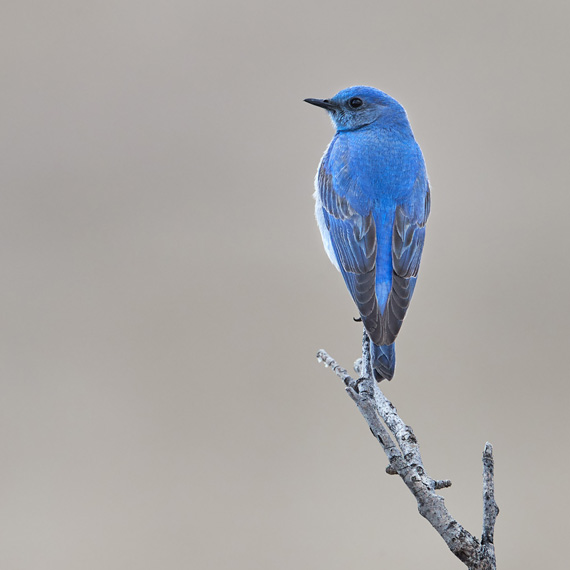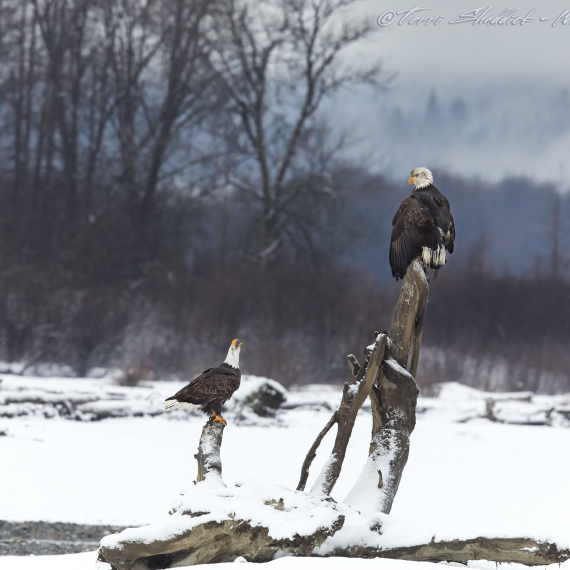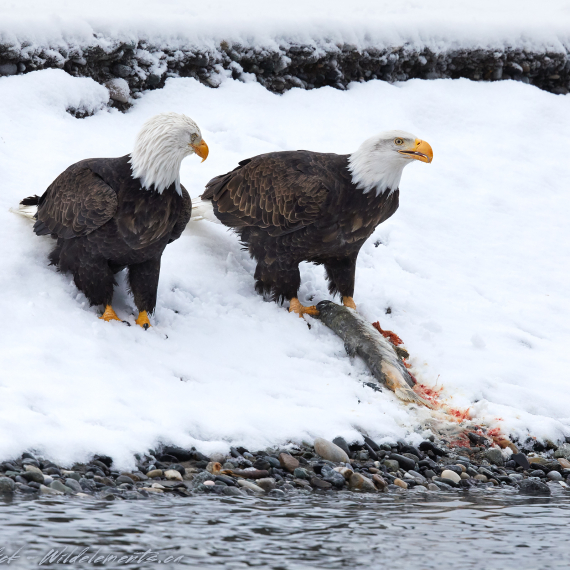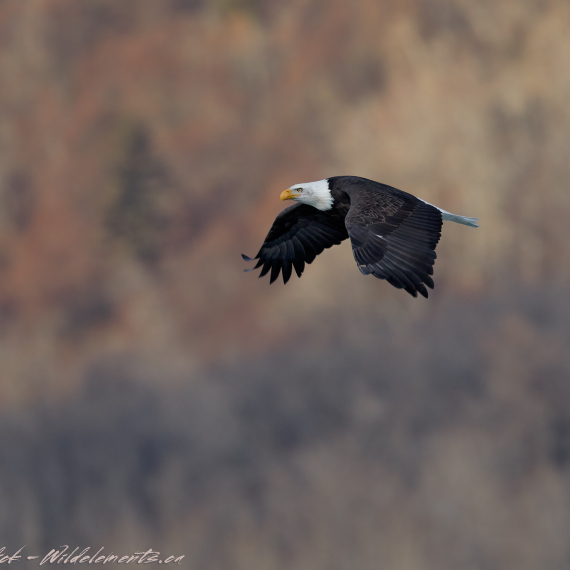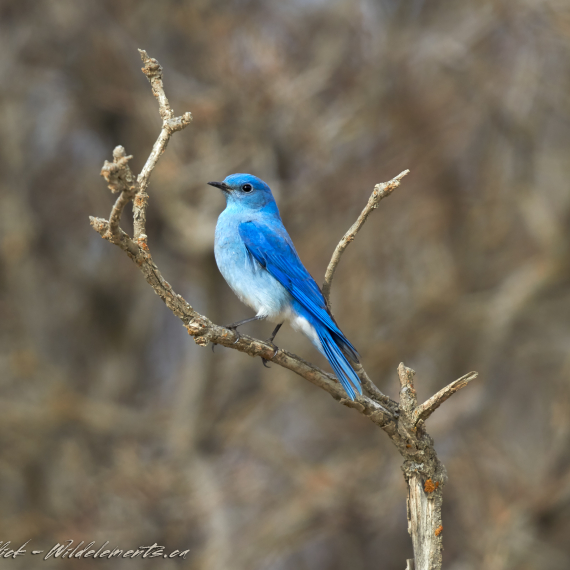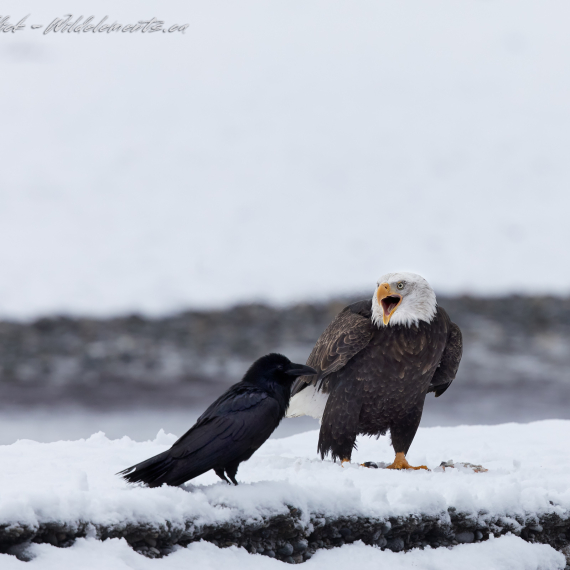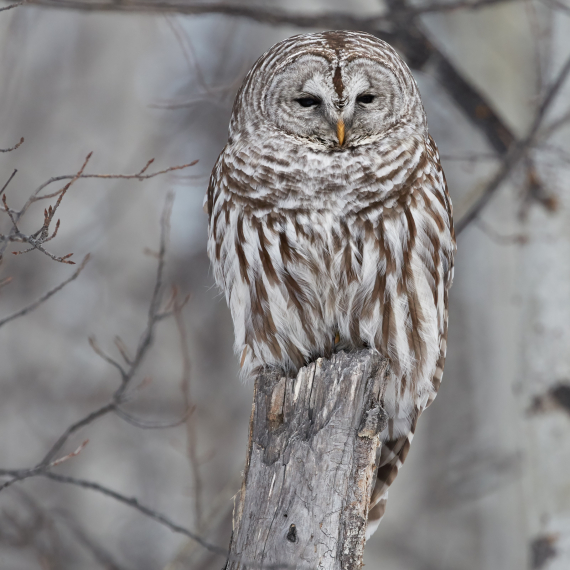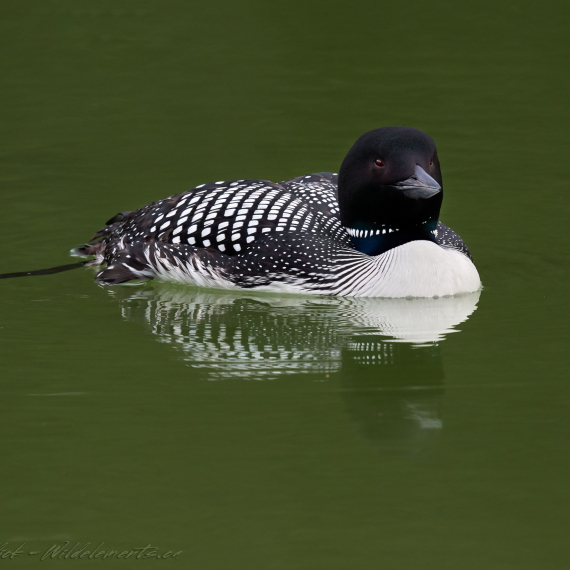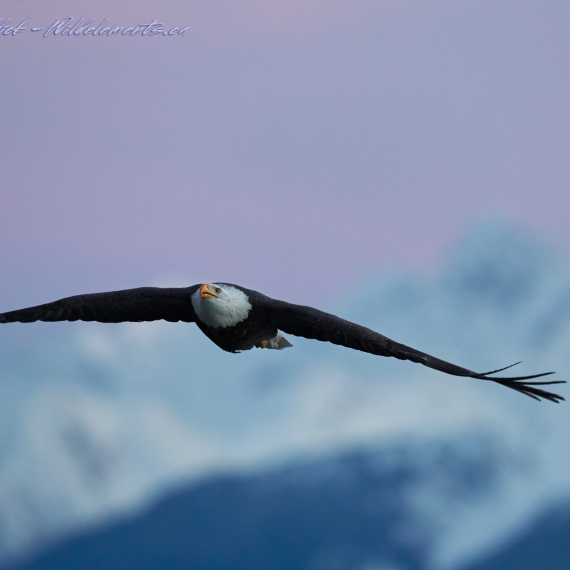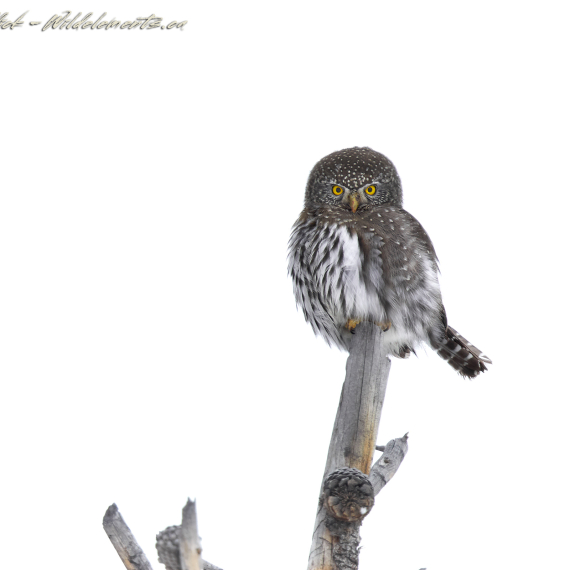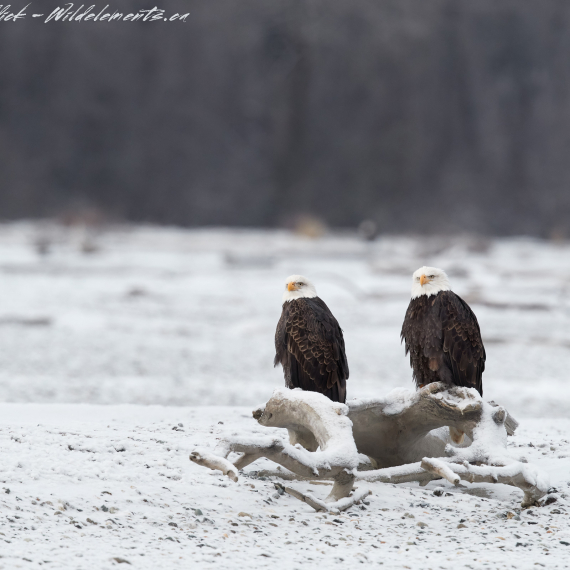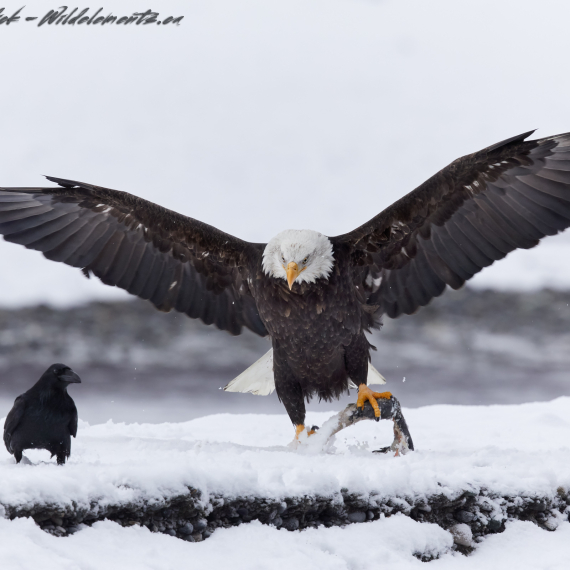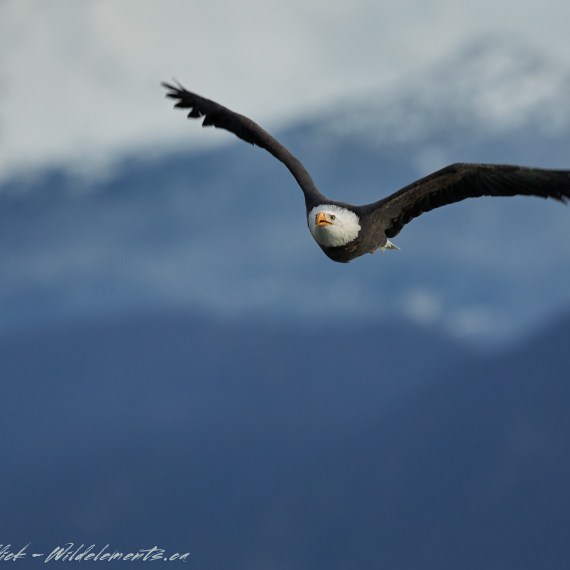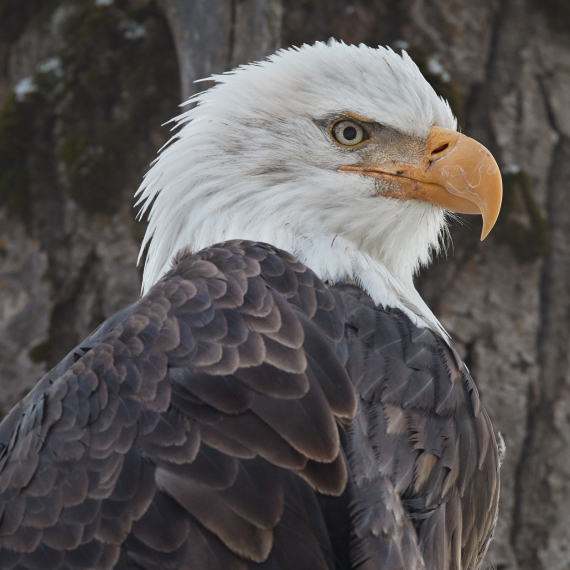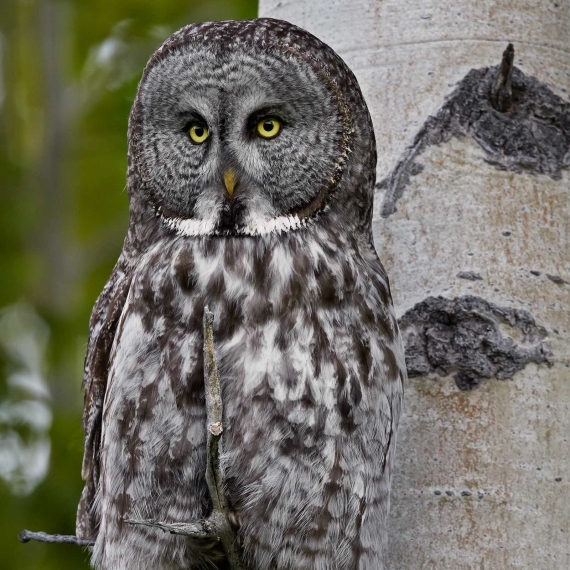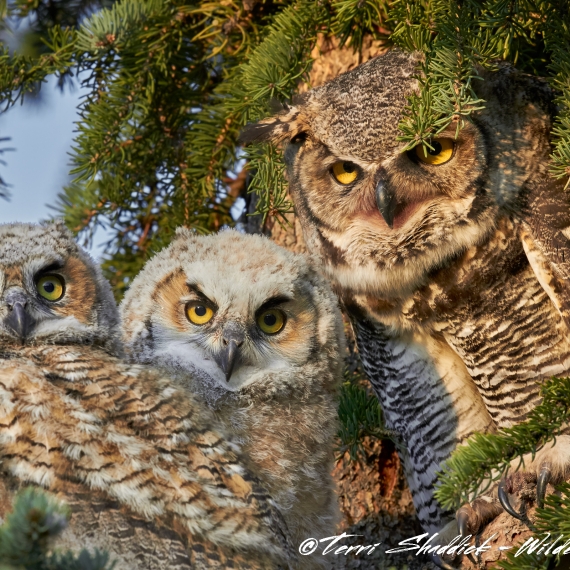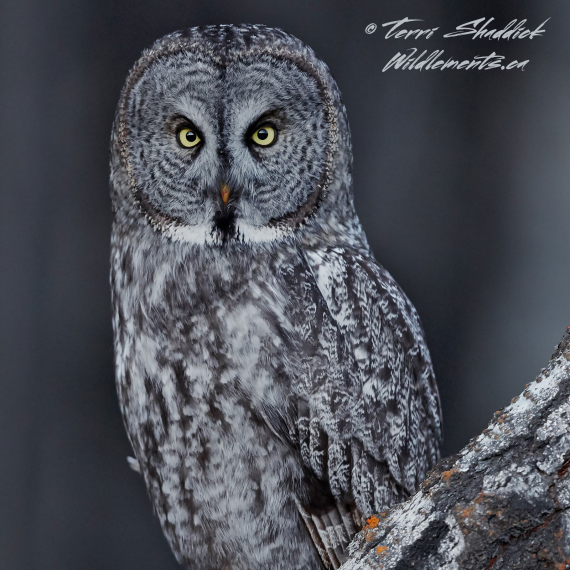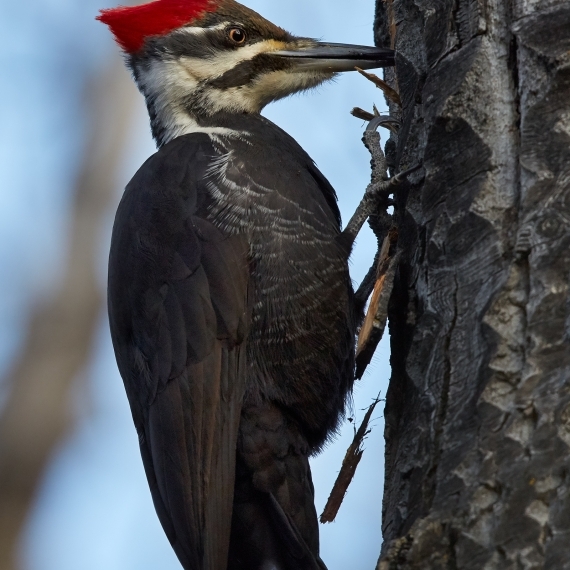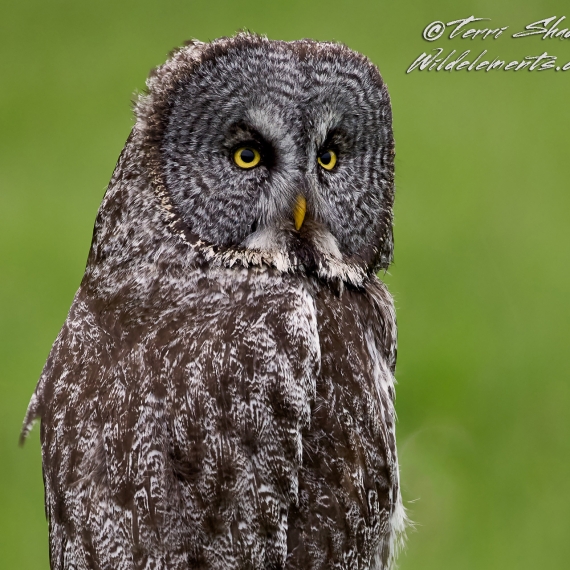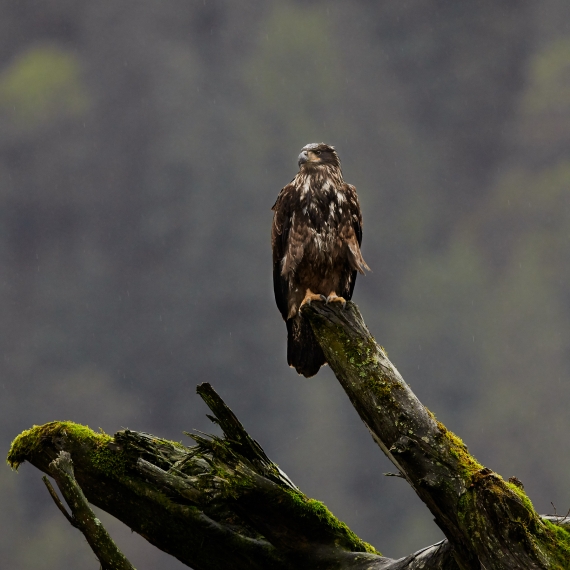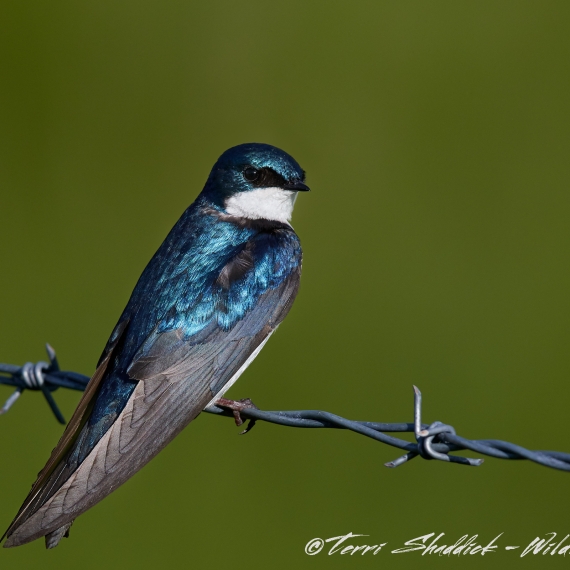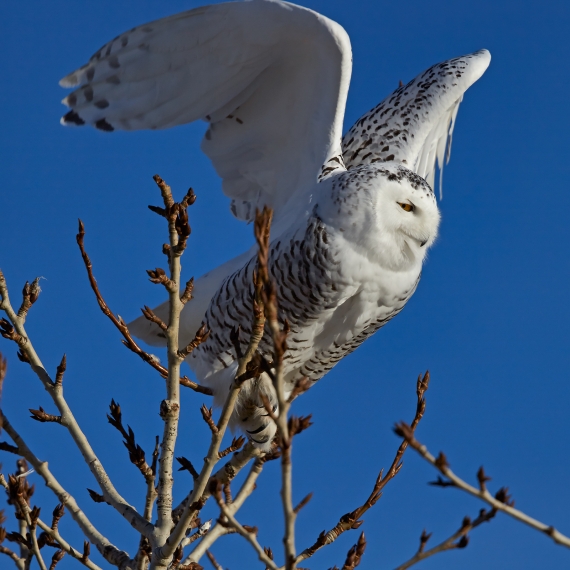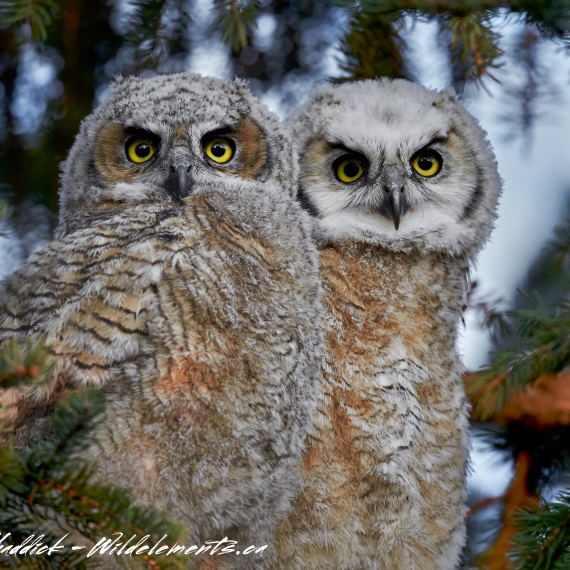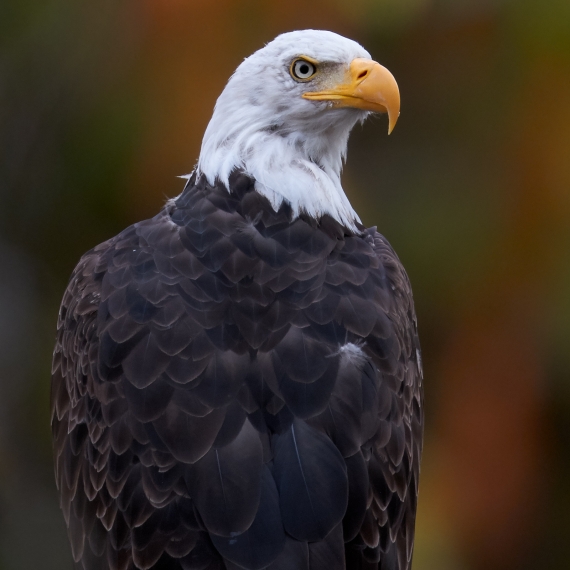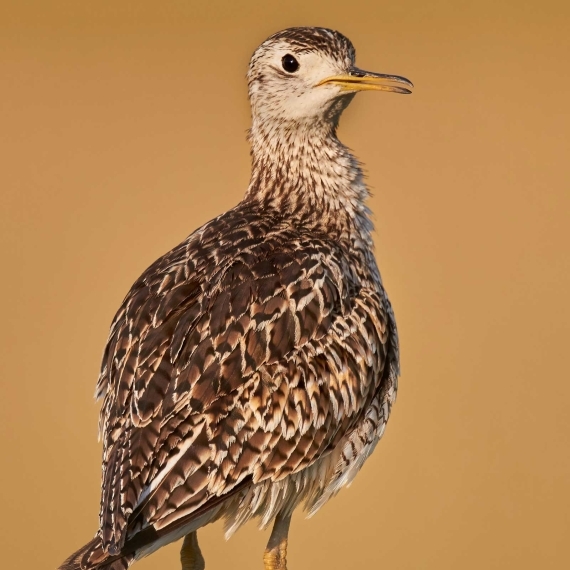Here in Canada we call this bird the “common loon” and most Canadians are familiar with it being on one side of our “loonie” (one-dollar coin). The name loon is thought to come from a Scandinavian word “lom” referring to how awkward and the difficulty a loon has walking on land.
However, in parts of Europe this bird is actually called the Great Northern Diver, which is a very accurate description of this bird. These birds are able to stay under water for up to a minute and dive up to 80 meters deep in order to prey on the fish, frogs, and minnows that make up their diets. Water plays a critical role in the life of the Common Loon, not only is it where they feed, it is also required for them to be able to fly where they require a long “runway” of water in order for them to take off for flight. Even though the nest on land, the nests are usually right at the end of the lakes they call home during breeding season.
If you are interested in purchasing this image, or any other images on my site, contact Terri Shaddick at [email protected].
Taken: May 14, 2015
Location: Jasper National Park, Alberta
Camera: Canon EOS 7D Mark II
Lens: Canon EF 500mm f/4L IS II USM + 1.4x III Extender
Focal Length: 700mm
Aperture: f/8
ISO: 1250
Exposure: 1/1000
About this Image
Here in Canada we call this bird the “common loon” and most Canadians are familiar with it being on one side of our “loonie” (one-dollar coin). The name loon is thought to come from a Scandinavian word “lom” referring to how awkward and the difficulty a loon has walking on land.
However, in parts of Europe this bird is actually called the Great Northern Diver, which is a very accurate description of this bird. These birds are able to stay under water for up to a minute and dive up to 80 meters deep in order to prey on the fish, frogs, and minnows that make up their diets. Water plays a critical role in the life of the Common Loon, not only is it where they feed, it is also required for them to be able to fly where they require a long “runway” of water in order for them to take off for flight. Even though the nest on land, the nests are usually right at the end of the lakes they call home during breeding season.
If you are interested in purchasing this image, or any other images on my site, contact Terri Shaddick at [email protected].
Taken: May 14, 2015
Location: Jasper National Park, Alberta
Camera Specs
Camera: Canon EOS 7D Mark II
Lens: Canon EF 500mm f/4L IS II USM + 1.4x III Extender
Focal Length: 700mm
Aperture: f/8
ISO: 1250
Exposure: 1/1000


